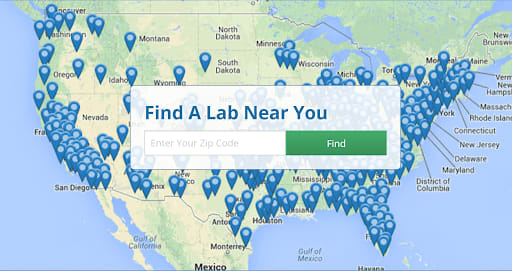What are the benefits of at-home COVID-19 testing kits?
Let’s look at the traditional protocol for those who wish to be tested. The first step is to call a doctor to understand if you qualify for a test. Still, many who don’t have an established primary care doctor, or those who use walk-in clinics for care, end up driving straight to a healthcare facility without the advice of a professional. If a healthcare provider encourages you to be tested over the phone, you make your way into a facility—where other families and healthcare workers are potentially exposed—and hope tests are available. Once tested, you may wait days for results.
It’s an inefficient and risky scenario considering around 80 percent of COVID-19 infections are mild or asymptomatic. This means that even if you feel well, anyone you come in contact with can contract the virus and consequently spread it to others. And while some areas have offered drive-through testing sites, most have been employed in limited settings and many recipients still wait days to hear back about test results.
With at-home tests, however, people have access to a safe, effective way to test themselves and stay quarantined while waiting for answers.
A comprehensive step-by-step guide to at-home COVID-19 tests
So how do at-home COVID-19 test kits work? At-home testing kits detect for the presence or absence of ribonucleic acid (RNA) from SARS-CoV-2 (severe acute respiratory syndrome coronavirus 2), which is responsible for COVID-19 infection. Authorized labs analyze your sample and deliver your results within just a few days of submission.
Let’s dive into the step-by-step process.
- Determine if you need to be tested. If you’ve been exposed or if you have symptoms of COVID-19 such as fever, dry cough, or loss of taste and smell, you should be tested. You can start with a call to your healthcare provider or simply complete an online assessment offered by the diagnostic company of your choice.
- Order your online kit. Choose from a list of credible diagnostic companies offering COVID-19 test kits that have been approved by the U.S. Food and Drug Administration’s Emergency Use Authorization for authorized laboratories. Once eligible, you will receive your test kit overnight or within 3 business days, depending on the company and shipping method of choice. Several diagnostic companies send recipients a prepaid UPS or FedEx shipping label to make the process as quick and seamless as possible. Visit the shipping carrier’s website to locate a drop box in your area. Make sure to follow instructions for registering your kit if necessary—many labs are unable to process tests if this step is missed.
- Sanitize your testing area. Thoroughly disinfect the areas and surfaces where you’ll be conducting your at-home COVID-19 test before opening the package. If you’ve chosen a nasal swab test, such as the one offered by Everlywell, you may be instructed to blow your nose and wash your hands prior to sample collection.
- Follow instructions for testing. Read through the instructions carefully before testing yourself or a family member. Some diagnostic companies utilize nasal swab testing while others offer saliva test kids. Refer to specific instructions that come with your kit and take advantage of any video or print instructions offered by the company.
- Ship your test. Follow instructions for assembling your test, and sanitize the outer package as much as possible before placing it in a drop box. Many diagnostic companies instruct the tester to drop off samples on the same day they are collected, so pay close attention to testing guidelines.
- Await your results and quarantine. Within 24 to 72 hours of the lab receiving your sample, you should hear back about results via email or another communication method provided. As you wait, you should self-isolate at home to avoid the risk of exposing others to COVID-19. Should your test be positive, some diagnostic companies offer a telehealth consult to guide you through the next steps of your diagnosis.
What’s the difference between an at-home COVID-19 test and a COVID-19 antibody test?
Unlike a COVID-19 test kit, at-home COVID-19 antibody tests are not used to detect an active infection. That means antibody kits are appropriate for those who suspect they may have had COVID-19 and have begun to recover, or build antibodies. Antibody tests, such as those offered by HealthLabs and Health Testing Centers, test for a type of antibody called immunoglobulin G (IgG). If you’ve been infected and have recently recovered, your immune system may have produced detectable IgG antibodies to fight off the illness.
It’s important to note that because antibody tests don’t check for an active COVID-19 virus, these are not appropriate for those wishing to be tested for current infection. Some diagnostic centers require blood samples from a finger prick or blood draw administered by a nearby laboratory collection site. Make sure to verify instructions for your antibody test before purchase.
At-home COVID-19 testing kits—A vital piece of a post-COVID nation
At-home COVID-19 testing kits offer a safe, reliable method for detecting active infection within the safety of your own home. As testing becomes more widespread and readily available, households have an alternative way to ensure the health and safety of loved ones and community members around them.

